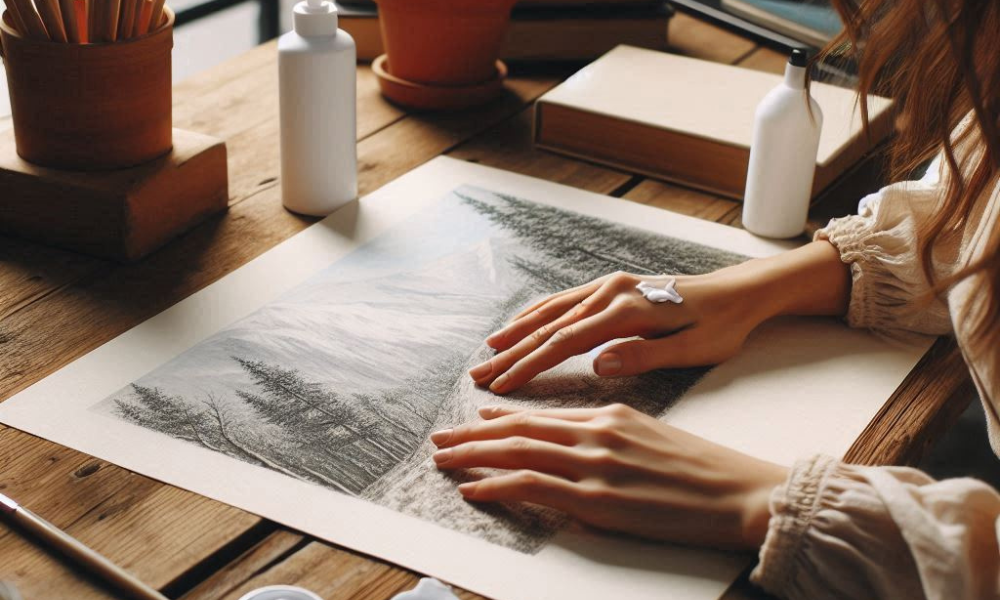Sketching is a beautiful form of self-expression, allowing artists to capture their thoughts, ideas, and observations on paper. However, the act of sketching can put significant strain on our hands, leading to discomfort and potential long-term issues. In this blog, we’ll explore effective ways to take care of your hands while indulging in your passion for sketching.
1. Understanding the Strain of Sketching
Before diving into hand care techniques, it’s important to recognize how sketching can affect your hands. Repetitive movements, awkward angles, and prolonged pressure can lead to conditions such as:
- Repetitive Strain Injuries (RSI): Common among artists, these injuries can cause pain and discomfort.
- Tendonitis: Inflammation of the tendons can make gripping tools uncomfortable.
- Carpal Tunnel Syndrome: Pressure on the median nerve can lead to numbness or tingling.
Understanding these potential issues is the first step toward prevention.
2. Ergonomic Setup
Your workspace plays a crucial role in hand health. Here are some ergonomic tips to consider:
Choose the Right Surface
- Height: Ensure your drawing surface is at a comfortable height. Your elbows should be at a 90-degree angle when drawing.
- Angle: Tilting your drawing surface can reduce strain on your wrists. A drawing board or easel that allows for adjustments can be beneficial.
Chair and Posture
- Supportive Chair: Use a chair that provides good back support. Your feet should be flat on the floor, and your knees should be at a right angle.
- Posture: Sit up straight, keeping your shoulders relaxed. Good posture minimizes tension throughout your body, including your hands.
3. Warm-Up Exercises
Just like any physical activity, warming up is essential. Simple hand and wrist exercises can increase blood flow and flexibility:
Hand Stretches
- Wrist Rolls: Rotate your wrists in circles, both clockwise and counterclockwise.
- Finger Stretch: Extend your fingers wide, hold for a few seconds, and then make a fist. Repeat several times.
- Palm Stretch: Press your palms together in front of your chest and push down gently for a few seconds.
Breaks and Movement
- Take regular breaks every 30-60 minutes. Stand up, stretch, and move around to alleviate tension.
4. Choosing the Right Tools
Your sketching tools can greatly impact the strain on your hands. Here are some considerations:
Pencils and Pens
- Weight: Opt for lightweight tools. Heavier pencils can cause unnecessary fatigue.
- Grip: Look for ergonomic grips. Pencils with softer grips can reduce pressure on your fingers.
Paper and Surface
- Texture: Choose a paper that suits your style but is also easy on your tools. Rough surfaces can cause more friction, leading to hand strain.
- Size: If working on larger projects, consider breaking them down into smaller sections. This can reduce the overall time your hands are engaged in intense sketching.
5. Technique and Style
How you hold your tools can significantly impact hand strain. Here are some tips:
Grip
- Relaxed Grip: Hold your pencil loosely, allowing for movement rather than gripping tightly. A relaxed grip reduces tension in your fingers and wrist.
- Change Your Grip: Experiment with different grips to find what feels most comfortable. This can also help distribute strain more evenly across your hands.
Stroke Technique
- Use Your Whole Arm: Rather than relying solely on your wrist for movement, engage your shoulder and arm for larger strokes. This technique can alleviate pressure on your wrists.
- Gentle Pressure: Apply only as much pressure as necessary. Heavy-handedness can lead to fatigue and strain.
6. Moisturizing and Skin Care
Frequent sketching can lead to dry skin or calluses, especially if you’re gripping your tools tightly. Taking care of your skin is just as important as caring for your muscles and joints:
Hydration
- Drink Water: Staying hydrated helps maintain skin elasticity and overall health.
- Hand Cream: Use a moisturizing lotion or cream regularly to keep your skin supple. Look for products that are rich in nutrients to help repair any damage.
Protective Gear
- Gloves: Consider wearing fingerless gloves or specialized art gloves if you find your hands getting sore. They can provide support while allowing for the tactile feedback you need while sketching.
7. Mindfulness and Awareness
Being mindful of your hand position and sensations can help prevent strain:
Listen to Your Body
- Pay attention to any discomfort or fatigue. If you start to feel pain, take a break and assess your technique or tools.
- Practicing mindfulness while sketching can help you stay aware of your hand movements and posture.
Focus on Enjoyment
- Remind yourself to enjoy the process. A relaxed mindset can lead to a more natural and less strained drawing experience.
8. Post-Sketching Care
After a sketching session, it’s important to care for your hands:
Cooling Down
- Stretch your fingers and wrists again to release tension after a long session.
- Use a cold pack if you feel any swelling or discomfort.
Rest and Recovery
- Allow your hands to rest. If you’ve been sketching for an extended period, consider taking a day off to let your hands recover.
Conclusion
Caring for your hands while sketching is crucial for maintaining your artistic passion without the burden of pain or discomfort. By implementing ergonomic practices, choosing the right tools, and being mindful of your body’s signals, you can create a sustainable and enjoyable sketching routine. Remember, your hands are your most valuable tools—treat them well, and they will continue to serve you for many artistic endeavors to come!




